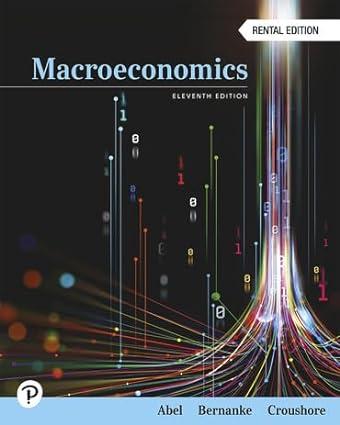This question asks you to study whether unanticipated declines in the money stock tend to raise interest
Question:
This question asks you to study whether unanticipated declines in the money stock tend to raise interest rates and lead to recessions, as implied by the misperceptions theory.
a. Using quarterly data from 1960 to the present, define unanticipated money growth in each quarter to be the rate of M2 growth (expressed as an annual rate) from the preceding quarter to the current quarter, minus average M2 growth over the preceding four quarters. (Average M2 growth over the preceding four quarters is a simple approximation of expected money growth.) Plot unanticipated money growth since 1960 . What happens to unanticipated money growth before the recessions in the 1960s, 1970s, and 1980s?
b. On a separate figure, graph unanticipated money growth along with the nominal three-month Treasury bill interest rate. In the 1960s, what happens to the nominal interest rate when there is a sharp upward spike in unanticipated money growth?
c. On a separate figure, graph unanticipated money growth against the real three-month Treasury bill interest rate (the nominal rate minus the inflation rate). What is the relationship between unanticipated money growth and the real interest rate in the 1973-1975 recession?
Step by Step Answer:





